You’ve landed a new client, so it’s time to set the stage with your strategic recommendations. But first, you need to understand better the company and the industry in which it operates. Your research has to go deep. How can you be sure you are covering all your bases? Where should you start?
A marketing SWOT analysis may be the answer.
What is a Marketing SWOT Analysis?
SWOT analysis is a competitive analysis framework that helps you get to know a company and its industry. In marketing, SWOT analysis examines the company and its performance from the promotional and marketing perspective.
The four parts of a SWOT analysis, strengths, weaknesses, opportunities, and threats, give a well-rounded view of your client’s positions relative to its customers and competitors.
Strengths and weaknesses stem from the client’s internal capabilities — things the company does well or poorly. Opportunities and threats are external factors beyond the client’s control — trends or developments in the industry.
You will examine each of these parts to conduct a marketing SWOT analysis. Then, this information will give you a solid foundation for your strategic marketing recommendations.
It’s helpful to start by auditing your client’s strengths and weaknesses.
Strengths and Weaknesses
To find your client’s strengths, look for a company’s resources or activities that are succeeding. Your client may be able to capitalize on these further. Examples of strengths might include an active Twitter following, knowledgeable subject-matter experts who write for the company blog, high-quality backlinks to the company website, and relationships with leading publications in the industry.
Of course, weaknesses are the opposite—look for gaps or deficiencies in skills or resources. These may be areas your agency can bolster for your client or that your client needs to address internally. The following would be considered weaknesses: a company website with poor usability, a lack of social media presence, poorly rated customer service, and no or low-quality blog content.
From an SEO perspective, you can easily find the strengths and weaknesses of a client’s website by running an SEO audit. Our competitive intelligence service would be better if you want a 360-degree view of all marketing efforts.
Use this checklist to find strengths and weaknesses
When conducting a marketing SWOT analysis for a client, look at the company’s skills, resources, or performances in the areas listed below. These are the most common areas where you will find strengths and weaknesses.
- Website performance
- Social media presence
- Search engine presence
- Trade-show presence
- Content to support each stage of the sales cycle
- Email list
- Sales channels
- Visibility or reputation of the firm in its industry
- Customer perception/reviews
- Customer relationships
- Relationships with industry influencers
- Marketing staff expertise
- Reporting and analysis capabilities
- Support for marketing within the organization
- Marketing department budget
- Product choices and quality
- Product margins
- Geographic presence in important locales
- Other unique capabilities relating to factors that are important to customers
After thoroughly understanding your client’s strengths and weaknesses, it’s time to step back and look at the industry. The next part of your marketing SWOT analysis examines external opportunities and threats.
Opportunities and Threats
As we mentioned above, opportunities and threats are external to your client, such as trends or situations happening in the industry. It’s considered an opportunity when your client can take action to benefit from it. Threats are the opposite. They are risks. Your client must decide whether to take action to mitigate the risk.
The most powerful marketing strategies arise when you spot an opportunity that aligns with your client’s strengths. For example, let’s say that questions about the types of products your client sells are on the rise on Reddit — an opportunity. You know your client has several employees with an established presence on the platform. Your strategy can apply the strength to the chance. In this example, your recommendation could be to form a task force of employee ambassadors willing to answer platform inquiries.
The most powerful marketing strategies arise when you spot an opportunity that aligns with your client's strengths.Click to tweetYou will also need to look for threats that your client should defend against. Threats can include competitors with a firm or growing presence in your industry or an emerging trend toward customers using do-it-yourself solutions, for example.
Look for opportunities and threats in these areas.
The opportunities and threats you unearth will vary widely by industry. However, they are likely to fall into these categories:
- Customer usage
- Competitors’ strengths and weaknesses
- Customer expectations and attitudes
- New technologies
- Advertising costs
- Distribution channels
- Marketing channels
- Market regulations
Where can you find this information? You can start with these sites for market research for general market data. Then, you’ll need to pinpoint sources of market information for your client’s specific industry. Look for industry journals that often report emerging trends and issue state-of-the-industry data.
To find competitor data, you can first use our Audience Overlap tool to identify a set of competitors. Then, you can analyze their websites and social media performance using our content and competitive analysis tools.
A Digital Marketing SWOT Analysis Example
Compiling data is the first step in a marketing SWOT analysis. You can use Alexa to find the data you need about your client’s website and digital marketing channels. We’ll look at a SWOT example for a small-business banking service below.
How to find strengths and weaknesses
You can get an overview of the strengths and weaknesses of a site with tools like Ahrefs or Semrush, where you can gather data on the following for your website:
- Top keywords and keyword opportunities
- Metrics comparing your client’s website performance to that of competing sites
- Sources of traffic to your client’s site
Our example company gets a higher percentage of its traffic from search than competing sites (13.4% vs. 6.2%), showing strength in SEO. The data also points out a weakness: a higher bounce rate than the competitive average (18.1% vs. 11.7%). It also has more sites linking in than competing sites (50 vs. 31), which can be a strength.
You can drill down to see more information on backlinks for your clients and competing sites.
An SEO Audit tool will highlight issues with your client’s site, showing you weaknesses that should be addressed. The Competitor Keyword Matrix (above) shows what paid and organic keywords you drive traffic for that your top competitors don’t and vice versa. This can reveal topic areas that Google thinks your client is an expert on (a strength) and regions where competing firms have an edge (a weakness).
Check out the Content Exploration tool for insight into social media engagement for your client’s content. Our example business has not yet posted content to social media. At first glance, that may appear to be a weakness. But we can see that competitors don’t post on social media either. Is this an opportunity instead? Let’s explore that.
How to spot opportunities and threats
Other publishers’ popularity of “small business banking” posts on social media suggests that the topic resonates with readers. This may be an opportunity for our example company to surpass its competitors in a channel they are not tapping into yet.
You can use the BuzzSumo tool to see which sites are shared most often for topic areas that are core to your client’s business. You’ll also see which articles get the most engagement, helping you pinpoint opportunities aligning with the client’s strengths.
Examining keyword gaps and easy-to-rank keywords via Ahrefs or Semrush will help you find the white space or keywords for which your client has yet to drive traffic. You can use filters to see low-competition keywords, which can be powerful opportunities. The Competitor Keyword Matrix can be used to see keywords for which competitors are ranking that your clients aren’t yet, representing threats.
Using the Audience Interests tool, we can see which other websites our client’s customers visit. Our example client’s audience also visits other sites that publish content about small-business banking, such as nerdwallet.com. This may be an opportunity for exposure via guest publishing or advertising on those sites.
The Share of Voice metric summarizes a client’s online position amongst industry competitors. Looking at our example, we can see that two competitors dominate organic search rankings for this set of sites. One of those also holds 95.4% of paid keywords amongst the competitive set. So, although search engines are an essential traffic source for us, we have a tiny share of voice in the industry for that channel.
Putting everything together
As you gather data during your SWOT analysis, classify it according to whether it’s a strength, a weakness, an opportunity, or a threat. Create a simple marketing SWOT analysis template to organize it into a matrix.
Here’s what this matrix looks like for our example client:
Organizing your data into a matrix makes it easy to consume and interpret. You can find tools to help you, like this SWOT analysis maker by Gliffy or this SWOT analysis workspace by Redbooth.
What’s Next? After the Marketing SWOT Analysis
Now it’s time to interpret your analysis and create recommendations for your client. After you’ve done a marketing SWOT analysis, you will see clear areas for improvement for your client. Your next step should be to pull together a report.
Your report will provide insights and action items based on what you learned in your analysis. You’ll want to discuss which opportunities the client is best suited to exploit based on its current strengths and which threats it might need to address. It will make sense to point out weaknesses your agency can help address to further reinforce your relationship. If this includes areas beyond the client’s current plan or works with you, it may lead to expanding that relationship.
And now that you’ve gone through this process for one client, you can use the resulting data and report as a detailed SWOT analysis example that you can use time and again with each new client.


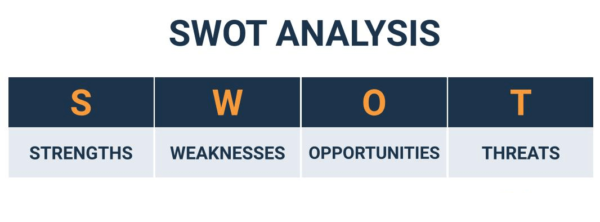


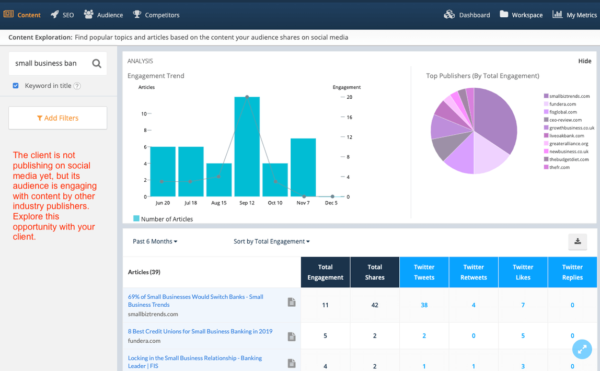
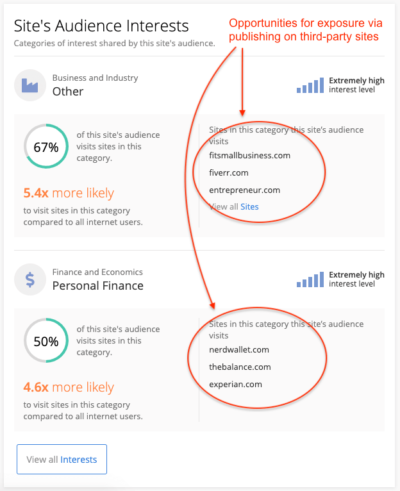
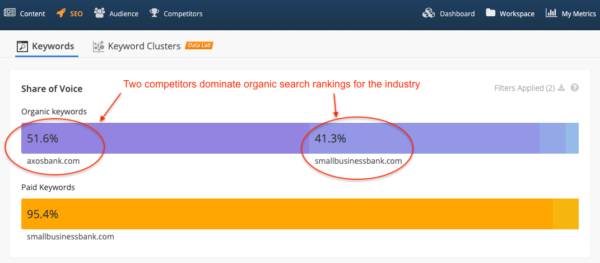
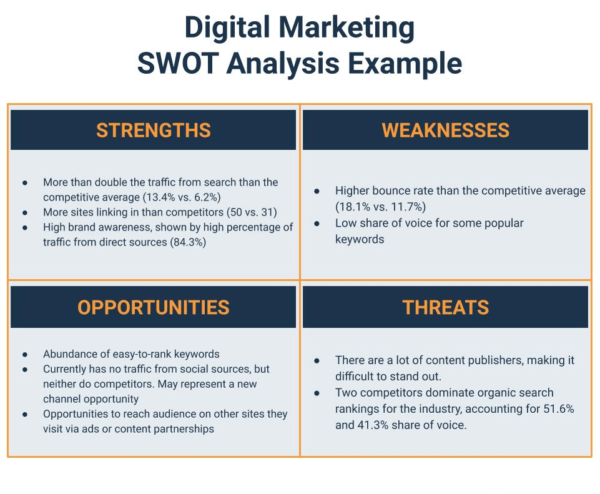





Great post on Marketing SWOT Analysis! Loved the clear breakdown and practical tips. Thanks for sharing!